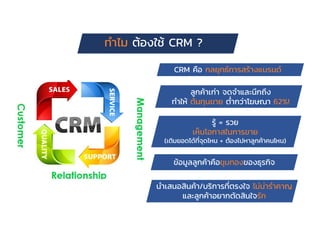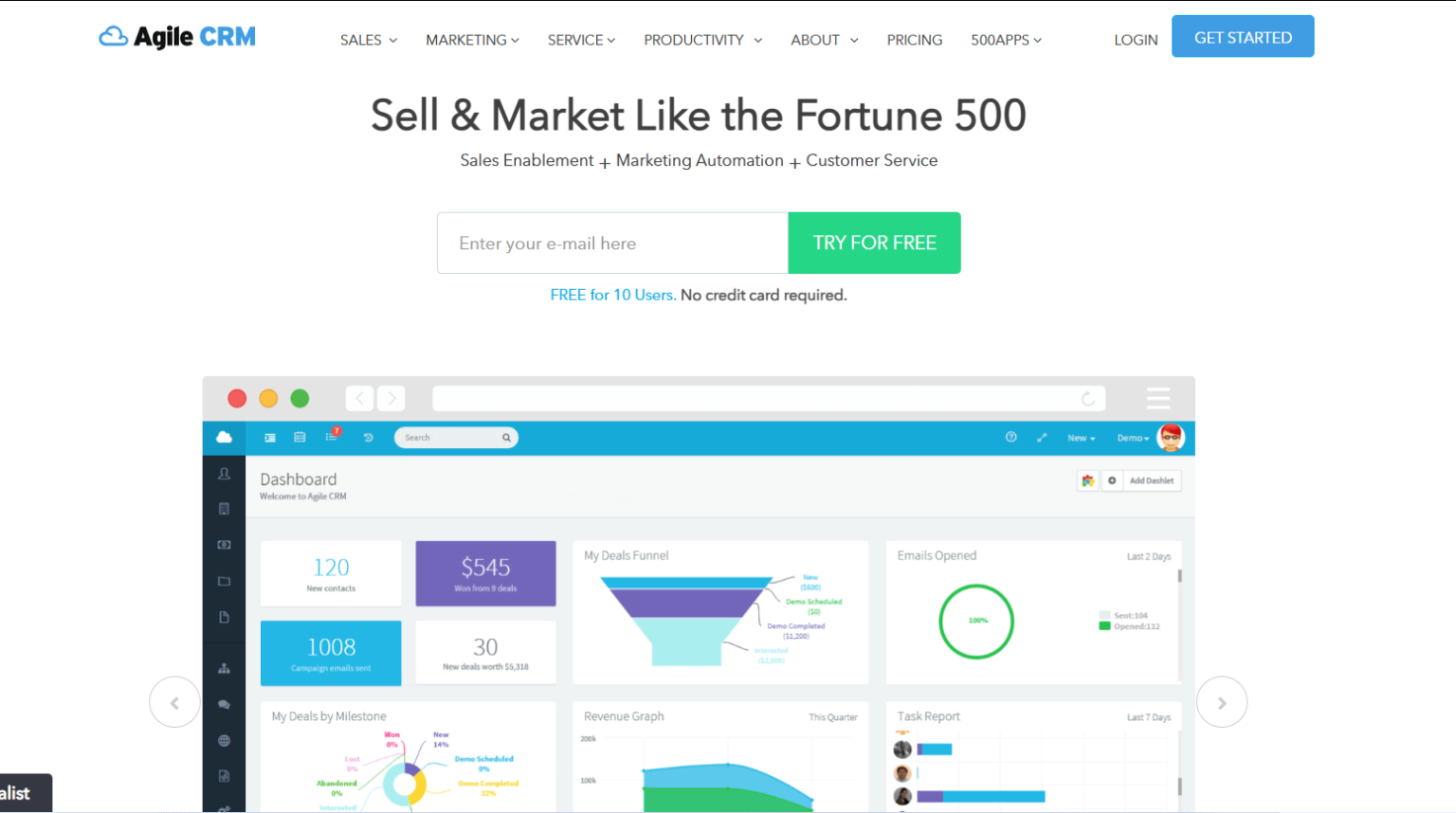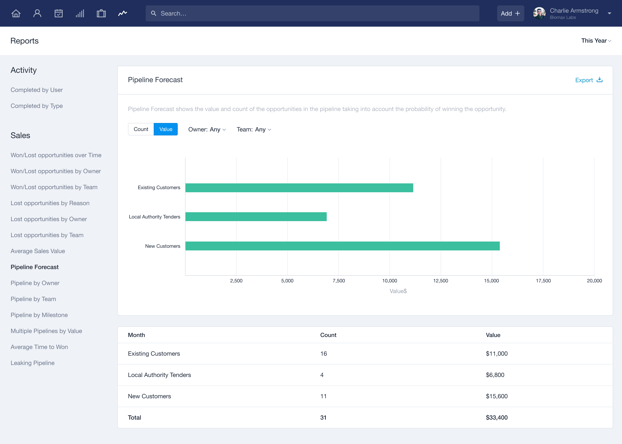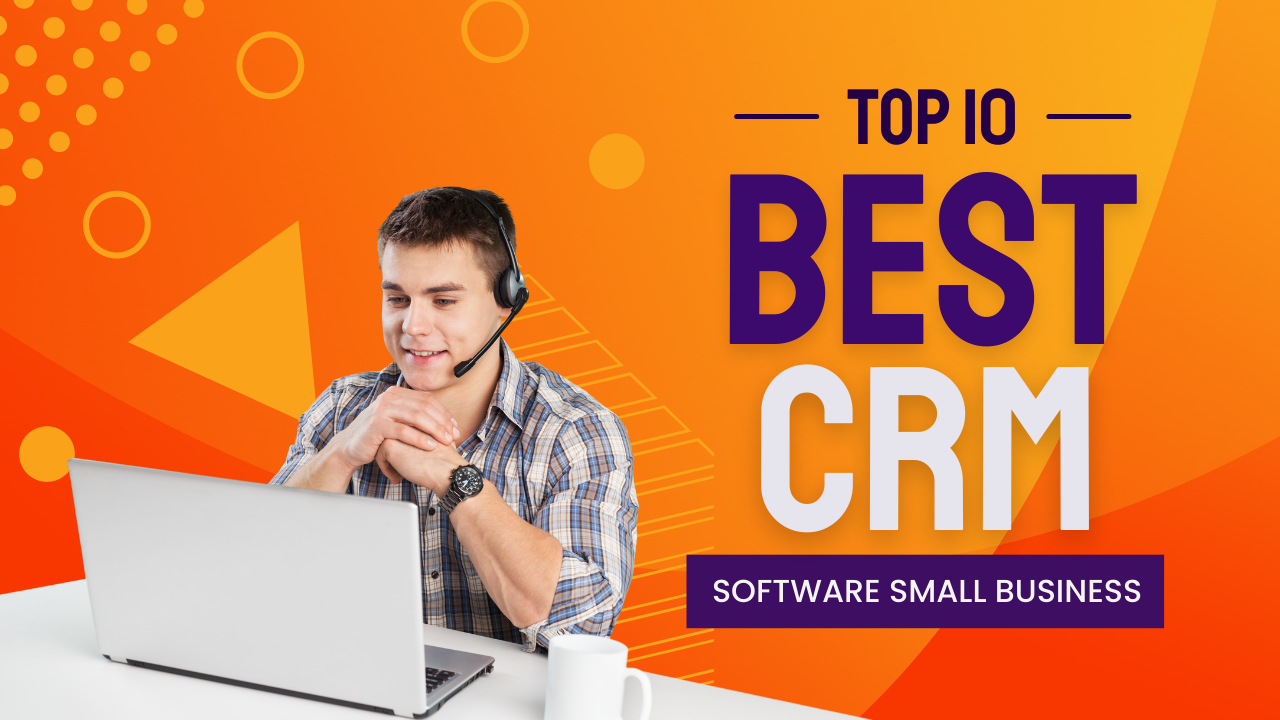
Small Business CRM: Your Beginner-Friendly Guide to Customer Relationship Management
Starting a small business is an exciting journey, filled with passion, dedication, and a whole lot of hard work. You’re juggling multiple hats – from product development and marketing to sales and customer service. In the midst of all this, keeping track of your customers and building strong relationships can feel like a monumental task. That’s where a Customer Relationship Management (CRM) system comes in – your secret weapon for success.
This comprehensive guide is designed specifically for small business owners who are new to the world of CRM. We’ll break down everything you need to know, from the basics to the benefits, and help you choose the right CRM to fit your unique needs. Get ready to transform your customer interactions and watch your business thrive!
What is a CRM? Demystifying the Acronym
Let’s start with the basics. CRM stands for Customer Relationship Management. At its core, a CRM is a system that helps you manage all your interactions with current and potential customers. Think of it as a central hub for all your customer-related information.
Instead of scattered spreadsheets, sticky notes, and email threads, a CRM consolidates everything in one place. This includes contact information, communication history, sales opportunities, customer preferences, and more. By having this data readily available, you can gain a 360-degree view of your customers and build stronger, more meaningful relationships.
Here’s a breakdown of what a CRM typically does:
- Contact Management: Store and organize all your customer contact details, including names, addresses, phone numbers, and email addresses.
- Interaction Tracking: Record all interactions with customers, such as emails, phone calls, meetings, and social media interactions.
- Sales Automation: Automate repetitive sales tasks, such as sending follow-up emails, scheduling appointments, and tracking sales progress.
- Marketing Automation: Automate marketing campaigns, such as email marketing, lead nurturing, and social media engagement.
- Reporting and Analytics: Track key performance indicators (KPIs), generate reports, and gain insights into your customer relationships and sales performance.
Why Does Your Small Business Need a CRM? The Benefits Unveiled
You might be thinking, “Do I really need a CRM?” The short answer is yes! Here’s why a CRM is a game-changer for small businesses:
- Improved Customer Relationships: A CRM helps you understand your customers better. By having all their information in one place, you can personalize your interactions, anticipate their needs, and provide exceptional customer service. This leads to increased customer loyalty and positive word-of-mouth referrals.
- Increased Sales: A CRM streamlines your sales process, making it easier to track leads, manage opportunities, and close deals. Sales automation features save time and effort, allowing your sales team to focus on building relationships and closing more sales.
- Enhanced Efficiency: A CRM automates repetitive tasks, freeing up your time and resources. You can automate email campaigns, schedule appointments, and track follow-ups, saving you valuable time and allowing you to focus on strategic initiatives.
- Better Data Organization: Say goodbye to disorganized spreadsheets and scattered information. A CRM provides a centralized database for all your customer data, making it easy to access, analyze, and share information across your team.
- Improved Collaboration: A CRM facilitates collaboration among team members. Everyone has access to the same customer information, ensuring consistent communication and a unified approach to customer service and sales.
- Data-Driven Decisions: A CRM provides valuable insights into your customer behavior and sales performance. You can track key metrics, identify trends, and make data-driven decisions to improve your business strategies.
- Scalability: As your business grows, a CRM can scale with you. You can easily add new users, expand your features, and accommodate your evolving needs.
Choosing the Right CRM for Your Small Business: A Step-by-Step Guide
Now that you understand the benefits, let’s dive into the process of choosing the right CRM for your small business. This is a crucial decision, so take your time and do your research. Here’s a step-by-step guide to help you navigate the selection process:
Step 1: Assess Your Needs and Goals
Before you start shopping for a CRM, take some time to define your needs and goals. What do you want to achieve with a CRM? What are your pain points? Consider the following questions:
- What are your primary business goals? (e.g., increase sales, improve customer service, streamline marketing efforts)
- What are your current challenges in managing customer relationships? (e.g., disorganized data, lack of communication, difficulty tracking leads)
- What specific features do you need? (e.g., contact management, sales automation, email marketing, reporting)
- How many users will need access to the CRM?
- What is your budget?
Answering these questions will help you create a clear picture of your requirements and guide your decision-making process.
Step 2: Research CRM Options
Once you have a clear understanding of your needs, it’s time to research different CRM options. There are numerous CRM providers in the market, each with its own strengths and weaknesses. Here are some popular CRM options for small businesses:
- Zoho CRM: A popular and affordable CRM with a wide range of features, suitable for businesses of all sizes.
- HubSpot CRM: A free CRM with powerful marketing and sales tools, ideal for businesses that prioritize inbound marketing.
- Salesforce Essentials: A simplified version of Salesforce, designed for small businesses, with a focus on sales and customer service.
- Pipedrive: A sales-focused CRM with a user-friendly interface and visual pipeline management.
- Freshsales: A sales CRM with built-in phone, email, and chat features.
- Insightly: A CRM that emphasizes project management and sales, suitable for businesses with complex projects.
When researching different CRM options, consider the following factors:
- Features: Does the CRM offer the features you need, such as contact management, sales automation, email marketing, and reporting?
- Ease of Use: Is the CRM user-friendly and easy to learn?
- Pricing: Does the pricing fit your budget?
- Integrations: Does the CRM integrate with your existing tools, such as email marketing platforms, accounting software, and social media platforms?
- Customer Support: Does the provider offer adequate customer support?
- Reviews and Ratings: Read reviews and ratings from other small business owners to get insights into their experiences.
Step 3: Evaluate and Compare
After researching different CRM options, it’s time to evaluate and compare them. Create a spreadsheet or document to compare the features, pricing, and other factors of each CRM. Consider the following:
- Features: Does the CRM offer all the features you need? Are there any features that are essential for your business?
- Pricing: Compare the pricing plans of each CRM. Consider the cost per user, the features included in each plan, and any additional costs for add-ons or integrations.
- Ease of Use: Try to get a free trial or demo of each CRM to assess its user-friendliness. Is the interface intuitive and easy to navigate?
- Integrations: Check if the CRM integrates with your existing tools. This can save you time and effort by streamlining your workflow.
- Customer Support: Evaluate the customer support options offered by each CRM provider. Do they offer phone support, email support, or live chat? Are they responsive and helpful?
- Reviews and Ratings: Read reviews and ratings from other small business owners to get insights into their experiences. Pay attention to any recurring themes or complaints.
Step 4: Choose the Right CRM and Implement It
Once you’ve evaluated and compared different CRM options, it’s time to make your decision. Choose the CRM that best fits your needs, goals, and budget. Before you start implementing the CRM, make sure you have a clear implementation plan. This should include the following steps:
- Data Migration: Decide how you will migrate your existing customer data into the CRM. You may need to clean up and organize your data before importing it.
- User Training: Train your team on how to use the CRM. Provide them with clear instructions, tutorials, and support.
- Customization: Customize the CRM to fit your specific needs. This may involve setting up custom fields, creating workflows, and configuring reports.
- Integration: Integrate the CRM with your existing tools, such as email marketing platforms, accounting software, and social media platforms.
- Testing: Test the CRM thoroughly to ensure that it is working correctly.
Implementing a CRM can take some time and effort, but it’s a worthwhile investment. Once your CRM is up and running, you’ll be able to start building stronger customer relationships, streamlining your sales process, and improving your overall business performance.
Step 5: Train Your Team and Get Started
The final step is to train your team on how to use the new CRM. This is critical for successful adoption. Here’s how to approach it:
- Comprehensive Training: Offer in-depth training sessions for all team members who will be using the CRM. Cover all the features, from basic contact management to advanced sales pipeline management.
- Hands-on Practice: Encourage hands-on practice. Let your team members explore the system, experiment with different features, and get comfortable with the interface.
- Create Training Materials: Develop easy-to-follow training materials, such as user manuals, video tutorials, and FAQs. These resources will be invaluable for ongoing support.
- Designate a CRM Champion: Appoint a CRM champion within your team. This person will be responsible for providing ongoing support, answering questions, and ensuring that the CRM is being used effectively.
- Provide Ongoing Support: Make sure your team has access to ongoing support. This could include regular check-ins, online forums, or direct access to the CRM provider’s customer support team.
Once your team is trained and comfortable with the CRM, you can start using it to its full potential. Start by importing your existing customer data and then start tracking your interactions with customers, managing your sales pipeline, and automating your marketing efforts.
Essential CRM Features for Small Businesses: What to Look For
When selecting a CRM, focus on features that are essential for your small business. Here are some key features to consider:
- Contact Management: This is the foundation of any CRM. It allows you to store and organize all your customer contact details, including names, addresses, phone numbers, and email addresses. Look for features like contact segmentation, tagging, and custom fields.
- Interaction Tracking: This feature allows you to record all your interactions with customers, such as emails, phone calls, meetings, and social media interactions. This provides a complete view of your customer relationships.
- Sales Automation: Sales automation features can save you time and effort by automating repetitive sales tasks, such as sending follow-up emails, scheduling appointments, and tracking sales progress.
- Lead Management: A good CRM helps you manage your leads effectively. Look for features like lead scoring, lead nurturing, and lead assignment.
- Reporting and Analytics: Reporting and analytics features allow you to track key performance indicators (KPIs), generate reports, and gain insights into your customer relationships and sales performance.
- Integration: Make sure the CRM integrates with your existing tools, such as email marketing platforms, accounting software, and social media platforms.
- Mobile Access: In today’s fast-paced world, mobile access is essential. Make sure the CRM offers a mobile app or a responsive design so you can access your customer data on the go.
Beginner-Friendly CRM Tips and Tricks
Even with a user-friendly CRM, there’s a learning curve. Here are some tips and tricks to help you get started and maximize your CRM’s benefits:
- Start Small: Don’t try to implement everything at once. Start with the basic features and gradually add more features as you become more comfortable with the system.
- Clean Up Your Data: Before importing your data into the CRM, clean it up. Remove any duplicates, correct errors, and standardize your data formatting.
- Use Tags and Custom Fields: Use tags and custom fields to segment your customers and personalize your interactions.
- Automate Tasks: Take advantage of automation features to streamline your workflow and save time.
- Set Up Reminders and Notifications: Set up reminders and notifications to stay on top of your tasks and follow-ups.
- Regularly Review Your Data: Regularly review your data to ensure that it is accurate and up-to-date.
- Don’t Be Afraid to Experiment: Don’t be afraid to experiment with different features and settings to find what works best for your business.
- Seek Support When Needed: If you get stuck, don’t hesitate to contact the CRM provider’s customer support team or search for online tutorials and resources.
Common Pitfalls to Avoid
While a CRM can be a powerful tool, there are some common pitfalls to avoid. Here are some things to keep in mind:
- Choosing the Wrong CRM: Take your time to research and choose the right CRM for your needs. Don’t just pick the first one you see.
- Not Defining Your Goals: Before implementing a CRM, define your goals and objectives. This will help you choose the right features and track your progress.
- Not Training Your Team: Make sure your team is properly trained on how to use the CRM. This is essential for successful adoption.
- Not Cleaning Up Your Data: Clean up your data before importing it into the CRM. This will ensure that your data is accurate and up-to-date.
- Not Using the CRM Consistently: The CRM is only effective if it is used consistently. Make sure your team uses it on a daily basis.
- Not Analyzing Your Data: Regularly analyze your data to gain insights into your customer relationships and sales performance.
- Not Adapting to Change: Your business needs will change over time. Be prepared to adapt your CRM to meet your evolving needs.
The Future of CRM for Small Businesses
The CRM landscape is constantly evolving, with new technologies and features emerging all the time. Here are some trends to watch:
- Artificial Intelligence (AI): AI is being used to automate tasks, personalize customer interactions, and provide insights into customer behavior.
- Mobile CRM: Mobile CRM is becoming increasingly important as businesses become more mobile.
- Social CRM: Social CRM integrates social media data into the CRM, providing a more complete view of your customers.
- Integration with Other Tools: CRM is increasingly integrating with other tools, such as email marketing platforms, accounting software, and e-commerce platforms.
- Focus on the Customer Experience: The focus is shifting from simply managing customer data to providing a seamless and personalized customer experience.
By staying up-to-date on these trends, you can ensure that your CRM is meeting your evolving needs and helping you stay ahead of the competition.
Conclusion: Embrace the Power of CRM
Implementing a CRM might seem daunting at first, but the benefits are undeniable. By choosing the right CRM, implementing it effectively, and training your team, you can transform your customer interactions, streamline your sales process, and ultimately, drive business growth. Don’t let customer relationship management become a burden. Embrace the power of CRM, and watch your small business flourish.
Remember, the journey of a thousand miles begins with a single step. Start by assessing your needs, researching your options, and choosing the CRM that’s right for you. With the right tools and a little bit of effort, you can build stronger customer relationships and achieve lasting success.


